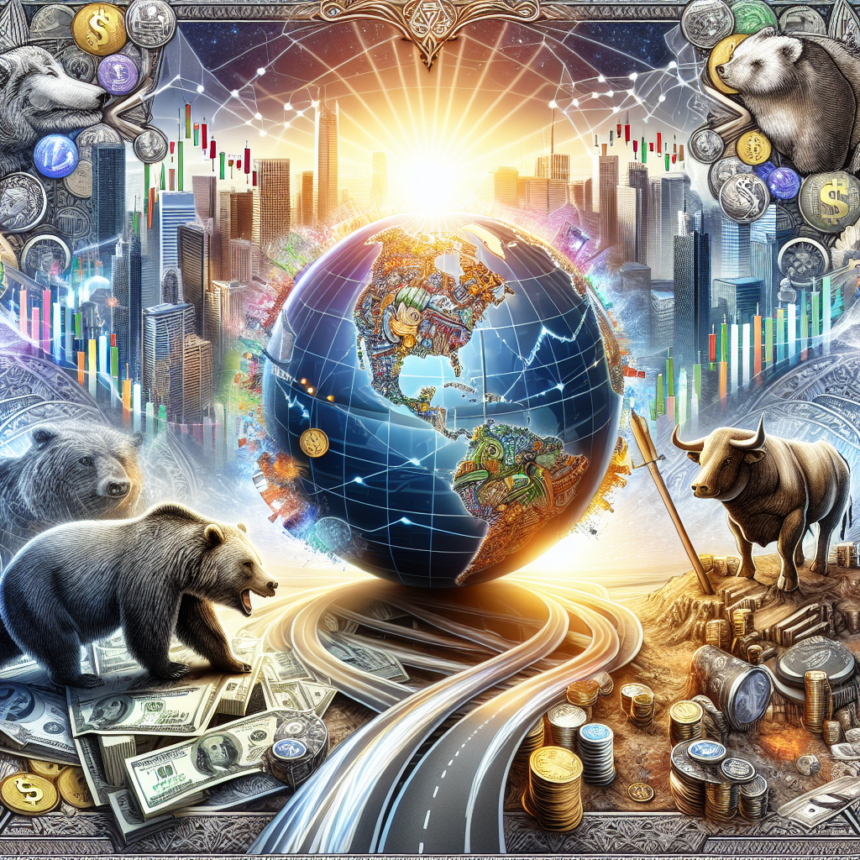As we navigate through the final quarter of 2023, the global economy reflects a complex interplay of trends, challenges, and emerging opportunities. Economic activities have shown resilience post-pandemic, despite fluctuations in inflation rates, geopolitical tensions, and shifts in consumer behavior. This article provides an overview of the current economic landscape and explores potential opportunities for growth.
Current Trends
1. Inflation and Monetary Policy
Inflation rates have remained a focal point for many economies, primarily influenced by supply chain disruptions, energy prices, and fiscal policies initiated during the pandemic. Central banks worldwide have adopted a cautious approach, adjusting interest rates to combat inflation while attempting to avoid stifling economic growth. For instance, the U.S. Federal Reserve and the European Central Bank have communicated a commitment to maintaining tighter monetary policies, which will likely continue into 2024.
2. Shift towards Sustainability
Sustainability has become a more significant consideration for governments, businesses, and consumers. The global push for green technologies and sustainable practices is creating fresh avenues for investment and innovation. Leaders from different sectors are increasingly focusing on sustainability as a way to future-proof their businesses and align with growing consumer demands for environmentally responsible products.
3. Digital Transformation
The COVID-19 pandemic accelerated the digitization of various sectors, leading to the widespread adoption of remote work, e-commerce, and technological innovation. Companies that embrace digital transformation are better positioned to respond to changing market demands. This trend is not limited to developed economies; emerging markets are also experiencing a surge in digital services, further narrowing the global digital divide.
Key Challenges
1. Geopolitical Tensions
Geopolitical unrest, especially between major world powers, continues to pose challenges to economic stability. Trade policies, tariffs, and sanctions can disrupt market operations and create uncertainty for businesses. Events like Russia’s invasion of Ukraine and ongoing tensions in the Asia-Pacific region have led to significant fluctuations in energy prices and have amplified economic concerns among global investors.
2. Supply Chain Disruptions
While the supply chain issues that plagued many industries in 2021 and 2022 have somewhat eased, challenges remain. Companies are still seeking more resilient supply chains after experiencing shortages and delays over the past few years. The need for diversification, regional manufacturing, and investments in supply chain technology is evident as businesses seek to mitigate risks associated with dependence on a limited number of suppliers.
3. Labor Market Dynamics
Labor shortages across various sectors have raised concerns about workforce sustainability and productivity. Many economies are grappling with mismatches between skills and available jobs. Furthermore, the ongoing trend of remote work has transformed employee expectations around work-life balance, compelling organizations to adapt their structures and management practices to attract and retain talent.
Opportunities Ahead
1. Investment in Green Technologies
The transition to renewable energy and sustainable practices presents substantial opportunities for investment. Companies focusing on clean energy, electric vehicles, and carbon reduction technologies are likely to benefit from government incentives and changing consumer preferences. As climate change becomes an urgent global concern, businesses that prioritize sustainability can gain competitive advantages.
2. Emerging Markets
Emerging markets, particularly in Asia, Africa, and Latin America, are showing strong potential for economic growth. With rising consumer populations and increasing urbanization, these regions present new markets for products and services. Investments targeted at these areas, particularly in technology and infrastructure, are expected to yield significant returns.
3. Advanced Technologies
The push for digital transformation fosters innovation across various sectors, leading to increased demand for technologies such as artificial intelligence, machine learning, and blockchain. Businesses that invest in these advanced technologies can streamline operations, enhance customer experiences, and achieve significant efficiency gains.
Conclusion
As 2023 comes to a close, the global economy faces a unique mix of trends, challenges, and opportunities. The resilient response to inflation, the sustained focus on sustainability, and the digital transformation occurring across industries highlight the adaptability of businesses worldwide. However, geopolitical tensions and labor market dynamics remain significant challenges that must be addressed. By embracing innovation and sustainability, organizations can unlock new growth potential and navigate the complexities of the evolving economic landscape.
FAQs
Q1: What are the main factors influencing current global inflation rates?
A1: Current inflation rates are influenced by supply chain disruptions, fluctuating energy prices, and fiscal measures taken during the pandemic. Central banks are adjusting interest rates in response.
Q2: How is the shift towards sustainability changing business practices?
A2: Businesses are adopting more environmentally responsible practices, integrating sustainability into their core strategies, and innovating in green technologies to meet consumer demand and regulatory requirements.
Q3: What opportunities do emerging markets present?
A3: Emerging markets offer expanding consumer bases, urbanization, and opportunities for investments in technology and infrastructure, making them attractive for businesses looking to grow.
Q4: How can companies cope with ongoing supply chain disruptions?
A4: Companies can mitigate risks by diversifying suppliers, investing in supply chain technology, and building more resilient operations to adapt to disruptions quickly.
Q5: What role does digital transformation play in economic recovery?
A5: Digital transformation improves operational efficiency, customer engagement, and innovation, enabling businesses to adapt swiftly to market changes and enhance competitiveness in the post-pandemic economy.










